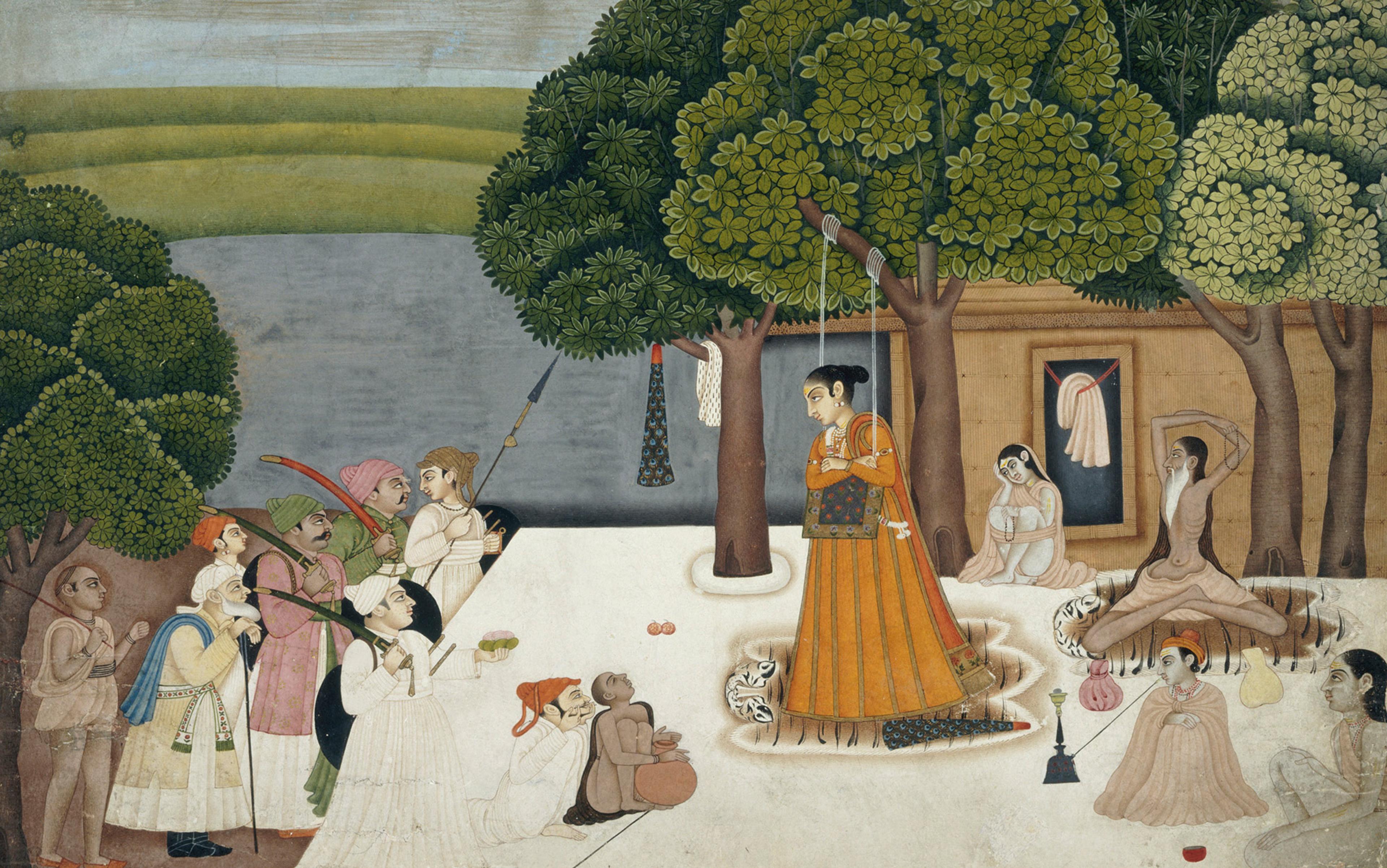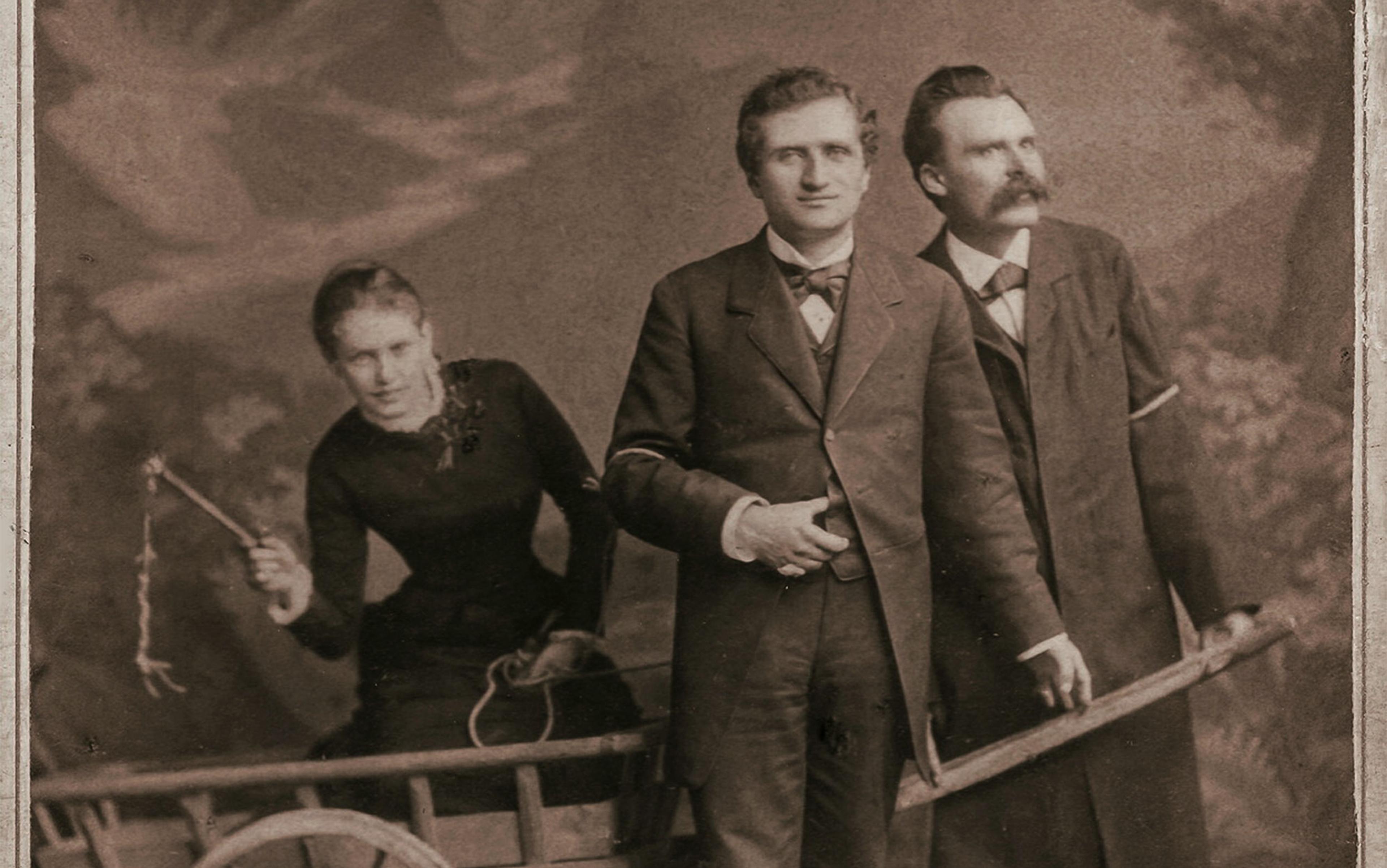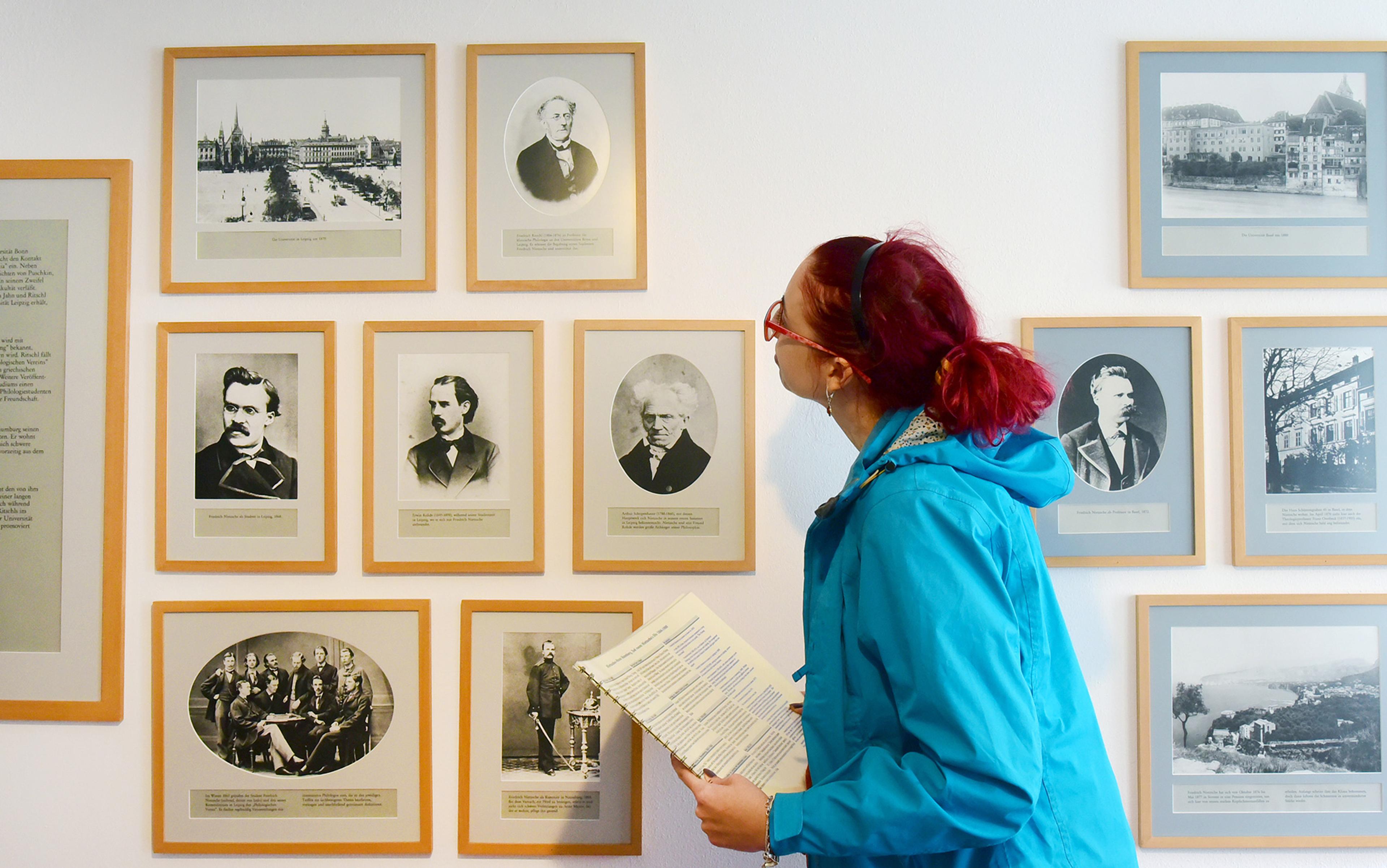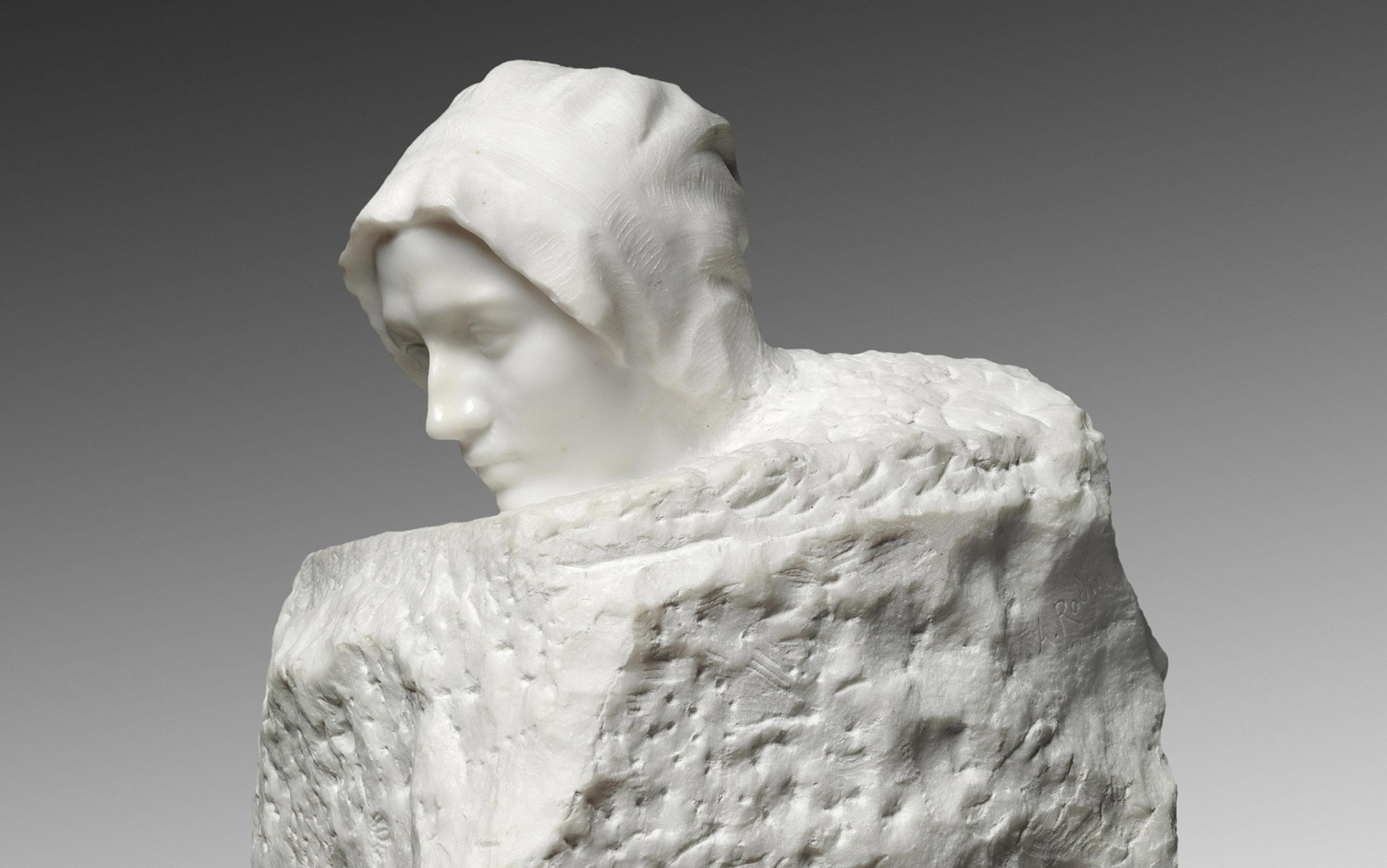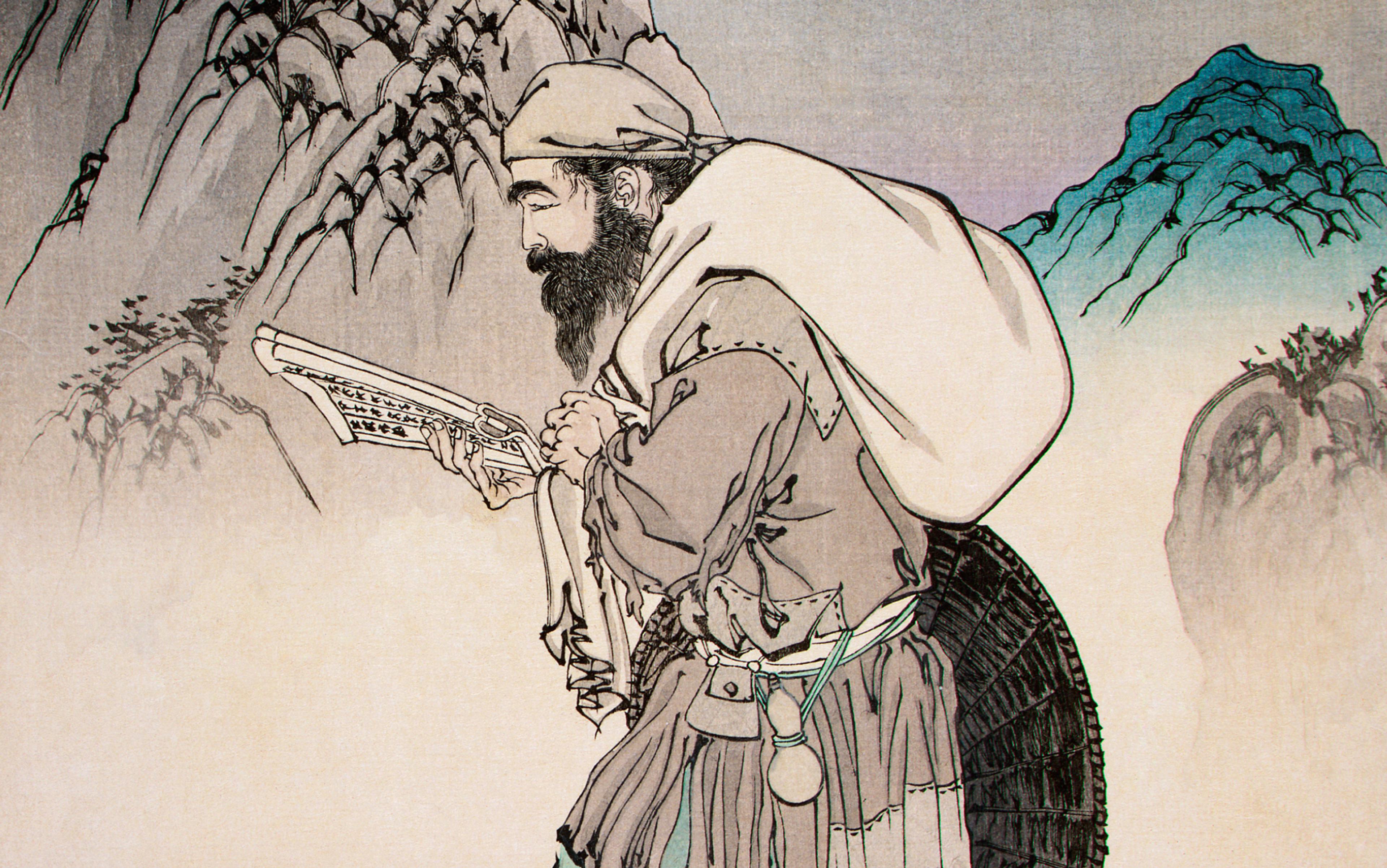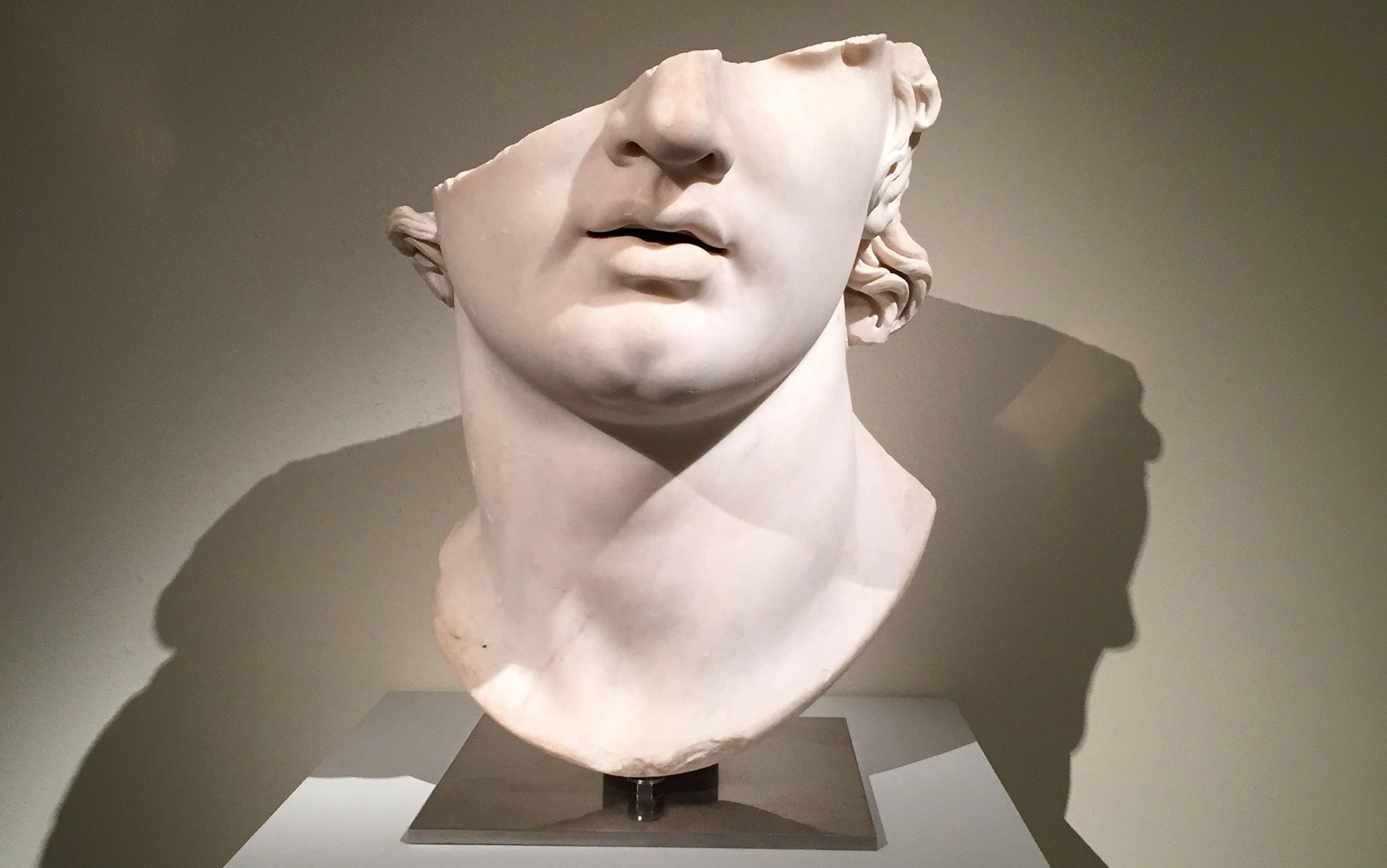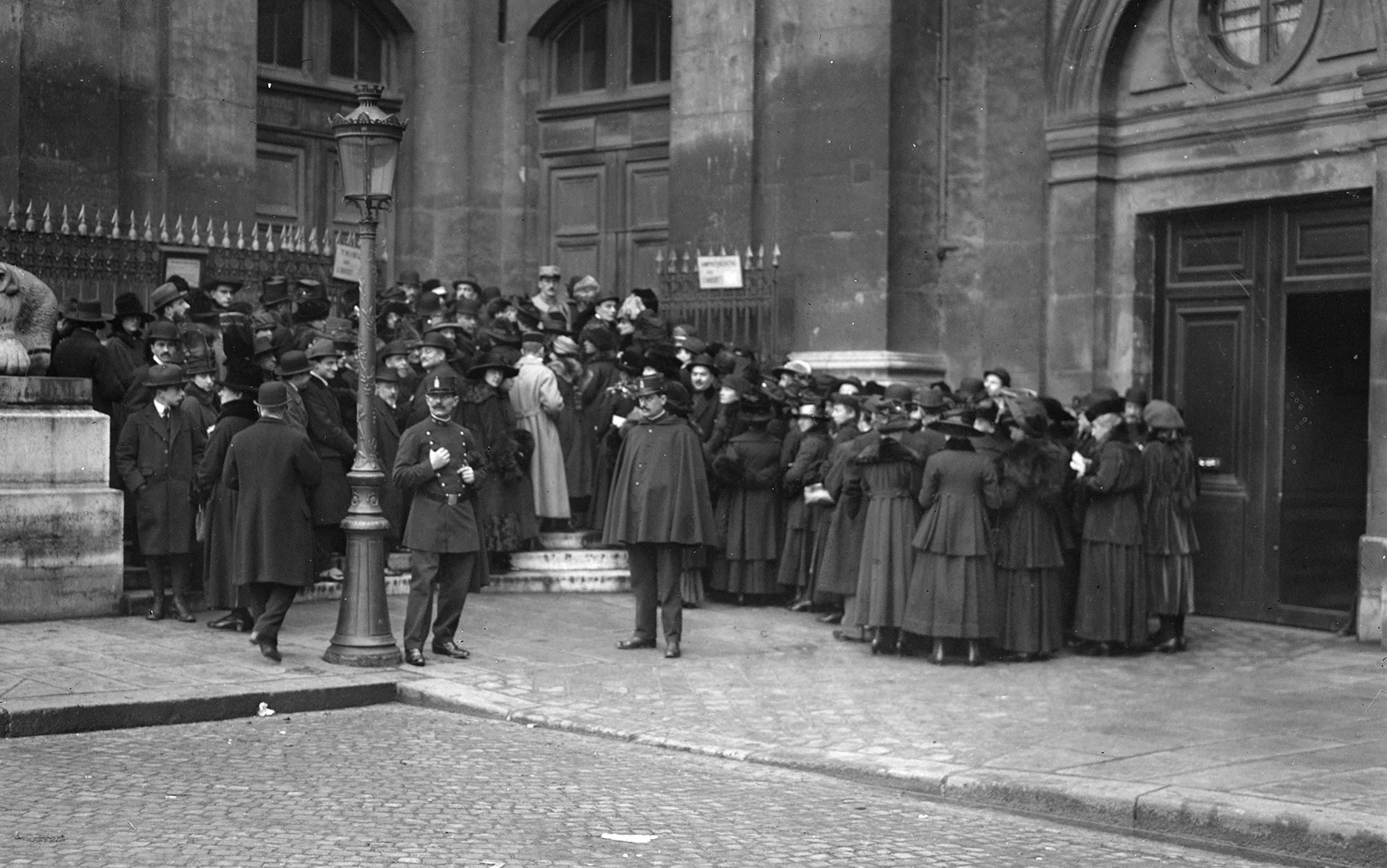‘I rise to challenge you, Yajnavalkya, with two questions, much as a fierce warrior … stringing his unstrung bow and taking two deadly arrows in his hand, would rise to challenge an enemy. Give me answers to them!’ With these daring words, Gargi Vachaknavi, a Vedic female sage, launched into philosophical debate with Yajnavalkya, the semi-legendary philosopher king and the greatest sage of his day. She repeatedly confronts him with existential questions about the fundamental ontology of the world: what is it that holds the Universe together? Yajnavalkya eventually proclaims it to be ‘the imperishable [and] on this very imperishable, Gargi, space is woven back and forth’. Vachaknavi is satisfied, and she declares to the other Brahmins: ‘You should consider yourself lucky if you escape from this man by merely paying him your respects. None of you will ever defeat him in a philosophical debate.’
The story of Vachaknavi’s debate is from chapter three of the oldest of the Upanishads, the Bṛihadaraṇyaka, a diverse and complex Sanskrit text on metaphysics and ethics from about 700 BCE. Vachaknavi is one of the many ‘hidden figures’ of women in the history of philosophy in Asia, Africa, Europe and Latin America – what is often called the Global South. Philosophers today increasingly recognise the contributions that female philosophers have made to the history of European philosophy, such as Elisabeth of Bohemia, Margaret Cavendish and Anne Conway in the 17th century. (Indeed, the new Oxford University Press series Oxford New Histories of Philosophy might revolutionise how we look upon the history of philosophy.) But beyond Europe, female philosophers in general continue to get short shrift, and their contributions go largely unrecognised.
Vachaknavi is not the only female thinker that helped to shape the world’s oldest philosophy. Already in chapter two of the Upanishad, it is a woman, Maitreyi, who launches a discussion on the importance of one’s self (atman) to gain ‘the knowledge of this whole world’. She begins by asking Yajnavalkya (often described as her husband, but better thought of as her philosophical companion) a basic existential question of human beings: ‘If I were to possess the entire world filled with wealth, would it make me immortal?’ When he denies this, Maitreyi asks rhetorically: ‘What is the point in getting something that will not make me immortal?’ With that, the first foundation stone for the investigation of the relationship of knowledge to materialism is laid.
And then there is Sulabha, an ascetic Yogic wanderer, who wins a lengthy philosophical debate against the philosopher king Janaka in the epic Mahabharata (4th century BCE-4th century CE). The king goes quiet after Sulabha sets the record straight: ‘My body is different from yours. But my soul is not different from your soul.’
Indian male philosophers relied on their female counterparts throughout the centuries. The most famous classical Indian philosopher is perhaps Adi Shankara (788-820 CE), who formed the monistic school of Advaita Vedanta, a vital part of Hinduism that bases its arguments on the Upanishads. In biographies of him, we read how Shankara engaged in a competitive philosophical debate with Mandana Mishra of the rival school of Mimamsa, which uses only the four early Vedas. The verdict of the debate came from Ubhaya Bharati, Mishra’s wife. She, perhaps surprisingly, judged Shankara to be the champion, which had the unusual consequence of compelling her husband to submit to Shankara’s philosophical school. But then Bharati addresses Shankara: ‘You cannot claim complete success over my husband until I, his better half, have been defeated by you. Though you are an embodiment of divinity, I have a desire to debate with you.’
Shankara obeys. They debated the Vedas and the different philosophical schools for 17 days. Bharati could not beat him, but then she struck on the idea of questioning him on the Kama Sutra, the science and art of love, knowing that Shankara had been a celibate from boyhood. Shankara accepted the challenge, but requested a month-long break to the discussion so that he could study these corporeal matters to perfection. He was successful, Bharati concludes, in the manner of Vachaknavi from the Upanishads:
You took all the trouble to master the science of sex just to conform to the ways of the world. That we have met with defeat at your hands is not a matter of shame for us, just like moon and stars do not go into disrepute when the sun suppresses their light.
After the debate, Ubhaya Bharati reportedly founded her own influential school of thought.
Akka Mahadevi (c1130-60 CE) is another significant female Indian thinker. She was born in the town of Udutadi, in Karnataka, southwest India, and belonged to the Virasaiva movement, which argued for female equality, and opposed all that divides humankind, be it caste, sex, language or dress. Her radical philosophy confronted all priests, and perhaps still provokes today: ‘All the Vedas, scriptures and sacred lore, canons and codes, are but grist and husk ground in the mill.’
Mahadevi lived up to her own words by being a self-sufficient woman, choosing her own path and her devotion to Shiva rather than following the norms of scriptures, family or society. As a young woman, she married the local king Kaushika under the condition they kept separate bedrooms and she could spend her time as she pleased. When he broke his promise, Mahadevi took off all her clothes and walked freely into the streets, covered only by her long hair. The naked Mahadevi eventually arrived at Anubhava Mantapa, the centre of contemporary philosophical discussion. There she was confronted by the mystic and poet Allama Prabhu, who was understandably skeptical of this bare peripatetic. So they engaged in a philosophical and spiritual dialogue, during which Mahadevi convinced Prabhu of her spiritual worth (and uttered the imperishable line: ‘Take these husbands who die, decay, and feed them to your kitchen fires’). She was allowed into Prabhu’s inner circle, and seems to have ended her days as a widely revered poet and spiritual thinker.
Some would argue that Mahadevi is not a philosopher at all, that she is operating at, or outside of, the boundary of the discipline. But the Western ‘canon’ of today is, in the first place, based upon many such borderline figures who were not philosophers per se. Augustine of Hippo, for instance, was a bishop, Church Father and a Christian saint. Another canonised Western philosopher is Saint Thomas Aquinas, the Catholic priest, monk and Doctor of the Church. All the women mentioned here are less dogmatic, philosophically speaking, than either Augustine or Aquinas. Finding the boundaries of philosophy is a philosophical question itself: I would submit that any emerging ‘global canon’ of philosophy would do well to include the contributions of the women mentioned here.
Yunjidang argued for moral equality between men and women: ‘The sages are the same in kind as I am’
Women were also vital to early Chinese philosophy. In the classic Tao Te Ching, Laozi (6th century BCE) argues that a great state is like a clever woman: ‘The feminine always conquers the masculine by stillness.’ In a similar manner, the basic texts of Confucianism stress the thinking and wisdom of the respected Jing Jiang of Lu, who sent her son to study under Confucius (551-479 BCE). In Discourses of the States (4th century BCE), Jing is quoted in an argument against indolence: ‘When people toil, they think; when they think, their good minds are born.’ No wonder Confucius says of her: ‘The woman of the Gongfu clan is wise!’ (As the scholar of Chinese philosophy Bryan W Van Norden has pointed out, Confucius in fact ‘uses Jing Jiang as an example to instruct his disciples!’)
Another female scholar in this tradition is Ban Zhao (45-116 CE), who completed one of China’s great studies of history, the Book of Han (begun by her brother Ban Gu). It is still the preeminent reference for the era, and contains lengthy treatises on geography, literature, money and more. In her Lessons for Women, dedicated to her daughters, Ban Zhao refers to the philosophical classics and argues for teaching girls and boys equally to read and write – to do otherwise is to ‘ignore the essential relation’ between men and women. This resembles the positions of the much later male philosopher Li Zhi, writing in the 16th century, who praised the importance of women scholars throughout Chinese history. He corresponded with learned women such as Mei Danran, whom he praised as ‘outstanding’ and ‘stalwart’.
In Korea, Im Yunjidang (1721-93) flourished as possibly the first modern female philosopher on the Korean peninsula. She was born in Yangson in the Kyonggi province, close to Seoul, during the enlightened mid-Chosŏn era. Unfortunately her masterpiece Yunjidang Yugo has not yet been translated into English, which is a shame since Sungmoon Kim, professor of political theory at Harvard University, in 2014 proclaimed her to be ‘the counterpart to Mary Wollstonecraft in the Confucian tradition’. Yunjidang argued for moral equality between men and women and, comparing herself to a male thinker, writes that she is ‘completely earnest in sharing his aspiration to become a sage’: ‘The sages are the same in kind as I am.’
Moving to the Middle East, one of the founders of Sufism, a diverse branch within Islam, was Rabi’a of Basra (714-801 CE), born in today’s Iraq. She was sold into slavery as a child, but her devotion and ascetic piety (she purportedly used a brick as a pillow throughout her life) inspired Muslims male and female throughout the centuries. In perhaps a distant echo of Maitreyi, Rabi’a once said: ‘Were the world the possession of a [single] man, it would not make him rich.’
Noteworthy, too, is the extraordinarily prolific 16th-century female scholar ’A’ishah al-Ba’uniyyah of Damascus, who wrote more than a dozen works in prose and poetry. She travelled to Cairo and studied jurisprudence with other scholars, before meeting the Sultan al-Ghawri, possibly because of her reputation as a Sufi master. Recently, Thomas Emil Homerin translated one of al-Ba’uniyyah’s central works, The Principles of Sufism. In this book, she outlines her philosophy based on the four principles of repentance, sincerity, remembrance and love. Al-Ba’uniyyah refers to seven centuries of Sufist thinking, painstakingly quoting books, hadiths, epistles and hagiographies – commenting on around 100 scholars and thinkers. She argues that love is God’s greatest secret. Towards the end she writes:
I was joined to them and we stood alone in oneness, and drank the wine, not from cups, but from jars, in the tavern where the oath was sworn. We drank until we were drunk in pre-eternity where drunkenness lasts forever. So you see us drunk on wine, though appearing sober to disguise the affair.
Another crucial female Muslim philosopher is Nana Asma’u (1793-1864) from the Sokoto Caliphate in today’s northern Nigeria. Like other girls and boys before British colonisation, Asma’u started school when she was five. Her father was a scholar who argued for women’s rights, and he chatted with her daily about reading and writing, as Jean Boyd and Beverly Mack outline in their ground-breaking collections of her texts and life. In adult life, Asma’u became a political leader and a founder of the educational network Yan Taru (‘The Associates’), which is still active today. She wrote in the Fulfulde, Hausa and Arabic languages, and her first text had the fitting title: ‘Warning for the Negligent and Reminder for the Intelligent Regarding the Ways of the Pious’. She argued for humility between people, and for
good relations with one’s relatives, servants, and comrades. This is shown by being cheerful with them; doing good things for them; serving them; never acting as if superior to them; consulting them in many matters; helping them financially and physically; not coveting their possessions; not covering up any of their blameworthy affairs that one may discover, and not excusing them for such things; not boasting to them of wealth, position, or nobility; visiting their sick ones; and offering them advice without any pretence or excessive conceit.
On the other side of the Atlantic, more than 100 years earlier, Asma’u had a peer. The foremost early philosopher of post-Columbian North America was the feminist Sor Juana Inés de la Cruz (1651-95), popularly known as ‘The Phoenix of America’. Sor Juana wrote in Latin and Nahuátl, the Aztec language (Edith Grossman has recently translated her into English), and roamed across many genres: she wrote poetry, plays, romances and studies of science, mathematics and, of course, philosophy.
In the play Divine Narcissus (1689), she mocks the Spanish conquistador as a ‘barbarian, madman’ and gives voice to the Aztecs. Perhaps her most famous work is a letter written as a response to her fellow nun Sor Filotea, who argued that women should not study certain philosophical disciplines and should rather stick to devotional literature alone. At one point Sor Juana rhetorically asks: ‘Senora, what can we women know but kitchen philosophies?’ She replies herself: ‘I say that if Aristotle had cooked, he would have written a great deal more.’ And like Mahadevi, Sor Juana stingingly criticised those men ‘who for the simple fact of being men think they are wise’. She also draws on the long history of female philosophers, such as Hypatia of Alexandria, to prove the ubiquity of the passion for knowledge. It would have perhaps amused Sor Juana to learn that Sor Filotea, to whom her response was addressed, turned out to be the pseudonym of a man: the bishop Manuel Fernández de Santa Cruz.
The female-inclusive and non-European perspective on the history of philosophy carried on in Europe for hundreds of years. The philosophical canon, such as it is, was not always so European and male, even by the lights of European men. In Phaedrus, Plato states that letters and the sciences originated in Egypt. Clement of Alexandria (c150-215 CE) asserted that philosophy was universal, originally stemming from the Egyptians, Chaldeans, Persians and Indians, before the discipline ‘eventually penetrated into Greece’.
The historian Diogenes Laërtius (c180-240 CE) included a chapter on the woman Hipparchia in his Lives and Opinions of Eminent Philosophers. And when Laërtius’ history of philosophy was published in Amsterdam in 1758, in French, it had a woman on the title page. To this edition, a third volume was added, which is accredited to the little-known philosopher De Chaufepied, which contained 100 pages on ancient female philosophers, such as Julia Domna of Damascus and the Neoplatonist Theodora of Alexandria. He also wrote more than 90 pages on Confucius from China. In the 17th and 18th century, European thinkers such as G W Leibniz and François Quesnay likewise proudly found inspiration from China.
But this millennium-old understanding of the diversity of philosophy was erased from Europe. As Peter J K Park of Dallas University argues in Africa, Asia, and the History of Philosophy: Racism in the Formation of the Philosophical Canon, 1780-1830 (2013), curriculum lists from the early 19th century onwards began to be emptied of women and non-European thinkers. Leading European scholars chose to create a canon based on a new Eurocentric version – better suited to their imperial, racialised and patriarchal era. Early among these was Christoph Meiners, a professor in Göttingen and a proponent for white supremacy, who in his influential work History of the Origin, Progress and Decay of the Sciences in Greece and Rome (1781) began to define philosophy as a product solely of the European man. His ideology was carried on by the German historian Wilhelm Tennemann who helped to redefine the history of philosophy in his mammoth Geschichte der Philosophie (1798).
‘Within one generation, academic philosophers succeeded in excluding the non-European world’
As Park demonstrates, the tipping point came when G W F Hegel, in 1825, declared that ‘Oriental’ works should be excluded from philosophy in accordance with the new Kantian faction (who thought that Kantianism was a sort of culmination of philosophy) since it was not ‘thought, true philosophy’. Ironically, Hegel had been attacked himself by Christian polemicists for presenting a ‘pantheistic’ and ‘Oriental’ thought system. Hegel answered by joining the Kantian faction as a defensive manoeuvre – presenting Hegelianism as a synthesis, a true philosophical development. ‘Within one generation,’ Park concludes, ‘academic philosophers succeeded in excluding the non-European world and in consolidating a canon of philosophy that powerfully legitimised their discipline.’
To be sure, philosophers today are finally pushing back on this myopic view of their discipline’s history. For instance, the creation of a new, more inclusive canon will be discussed at the 115th annual meeting of the American Philosophical Association (APA) Eastern Division in New York in early January 2019. And in the past couple of years, new student campaigns have been asking questions such as ‘Why Is My Curriculum White?’ and demanding a decolonised and ‘liberated’ curriculum. Meanwhile, leading columnists such as Minna Salami in The Guardian have also pointed out that ‘philosophy has to be about more than white men’ as its existential purpose is to investigate ‘all human existence’.
In July, 2018, Anita L Allen, professor of law and philosophy at the University of Pennsylvania, became the first black woman to be president of the APA’s Eastern Division – the APA itself is now taking diversity seriously. And the Collegium of Black Women Philosophers, founded by Kathryn Sophia Belle at Pennsylvania State University, is also vital. In November 2017, it celebrated its 10th anniversary with a keynote speech by Angela Davis. Canada’s New Narratives in the History of Philosophy is also dedicated to reinvigorating the philosophical canon.
Nevertheless, the numbers still reveal that women of colour in the US, and in Europe for that matter, are better represented in natural sciences than in academia’s oldest field. No other discipline in the humanities is less diverse in terms of curriculum, students and professors. The philosophy departments, journals and curriculum lists are often as lacking in diversity now as they were in the 1970s.
So, here we are, two centuries after the ideological creation of the new canon. No wonder none of the above female philosophers from Asia, Africa or Latin America, all born before the exclusion of the 19th century, are included today. They do not fit within the canon’s artificial strictures. Neither do early modern European women philosophers such as Elisabeth of Bohemia (1618-80), even though her critique of Cartesian dualism made René Descartes concede in a letter to her: ‘In view of my published writings, the question that can most rightly be asked is the very one that you put to me.’
Like Gargi Vachaknavi in India some 2,300 years earlier, Elisabeth was reclaiming her time and space. One day, it might become possible to include the voices of marginalised philosophical women again. These women highlighted the questions that were most pressing in their time, and theorised philosophical answers that still need to be discussed in the 21st century. Philosophy was once a woman’s world. It is time to reclaim some of that lost realm.
